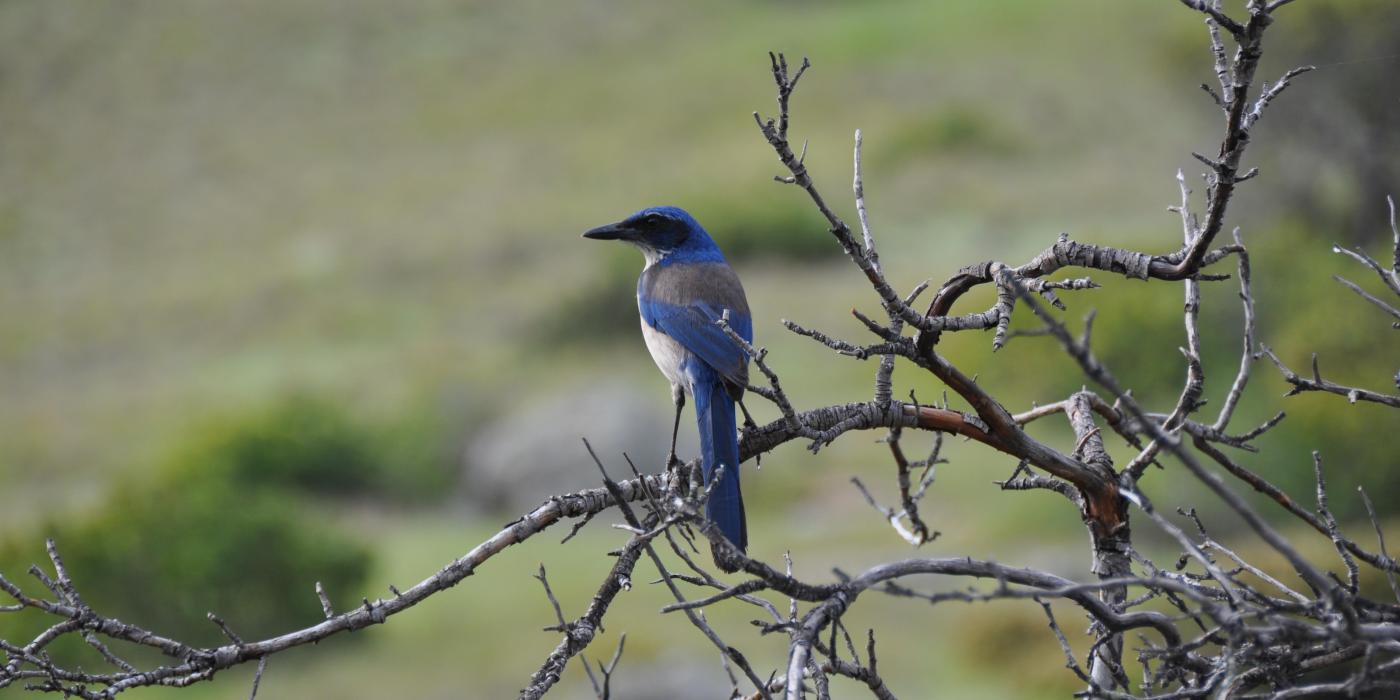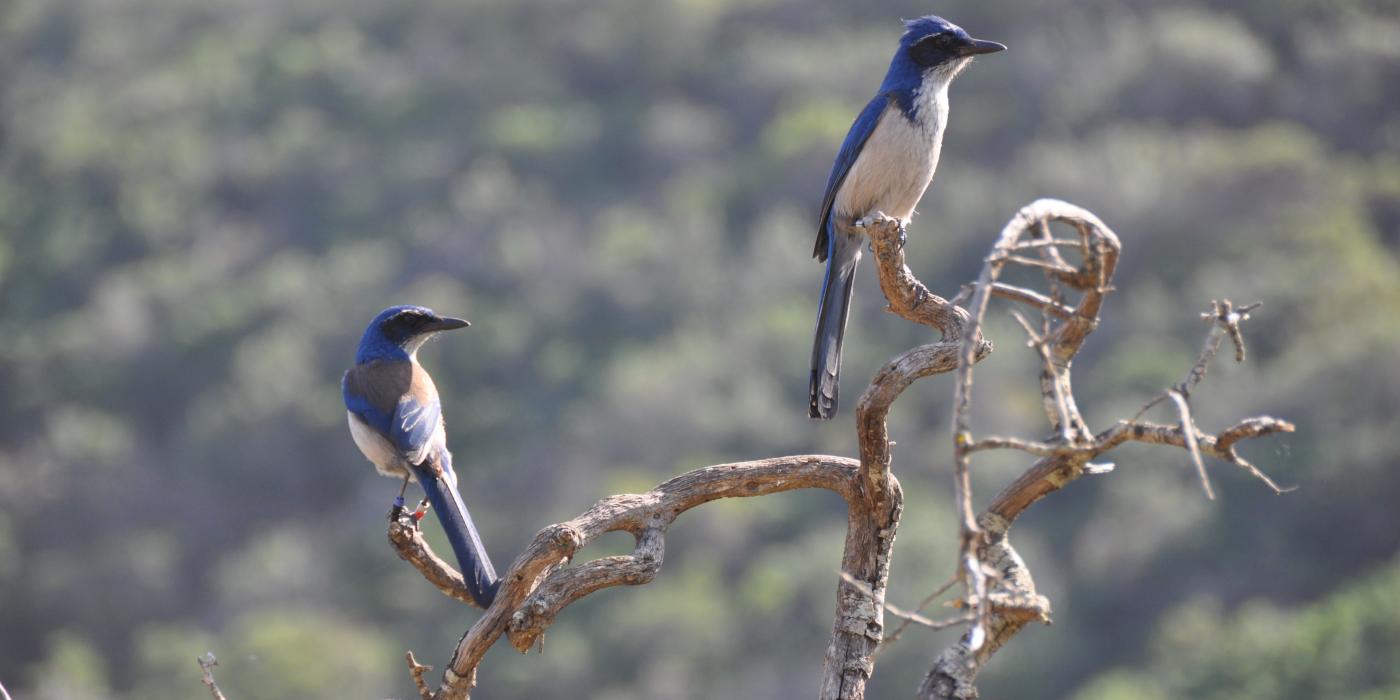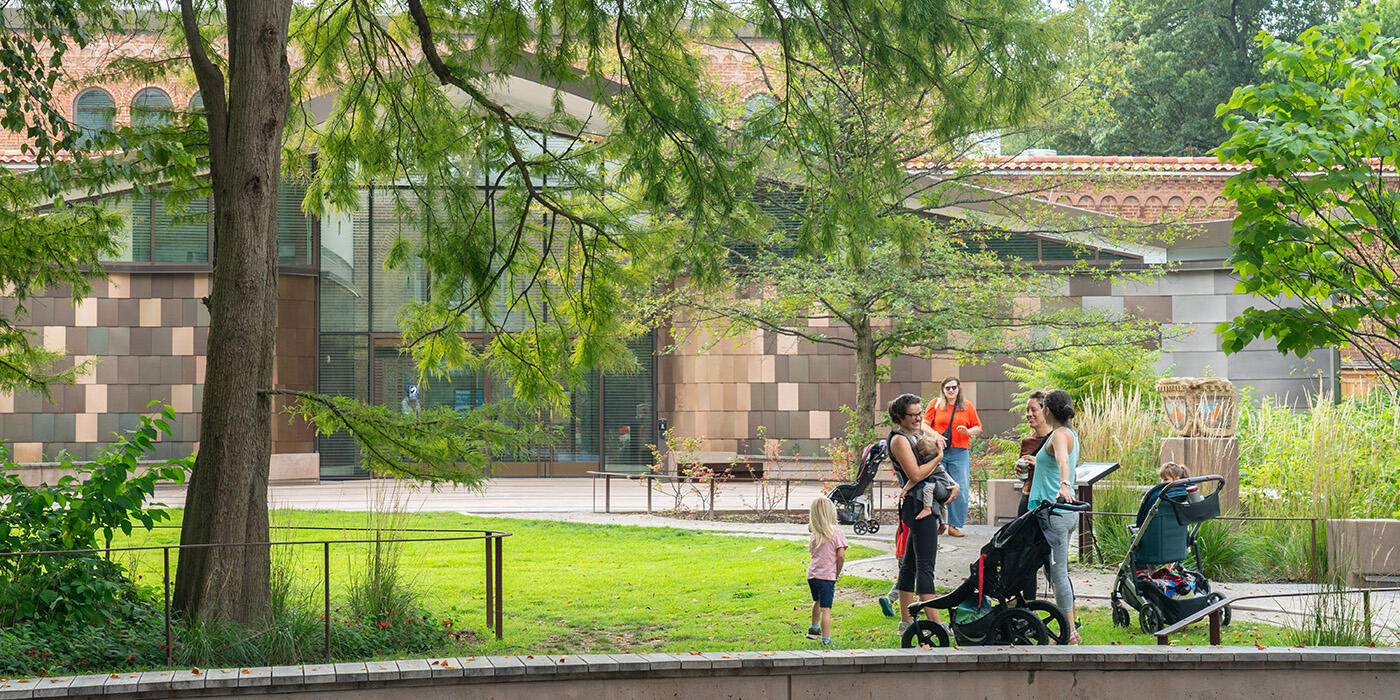Island Scrub-jays Defy Biological Expectations…Again
The island scrub-jay, a songbird endemic to Santa Cruz Island off the coast of southern California, has made headlines in recent years for bucking evolutionary and biological trends—and is at it again this year.
Smithsonian Migratory Bird Center researchers have found that birds living on the edge of the species’ range have less genetic diversity than those living in the interior. While this is expected to be true for species with extensive ranges, this pattern has not been documented in a small population (less than 3,000) limited to a small space (an island).
“The population isn’t struggling right now, but because the species only lives on a small isolated island it is more at risk of extinction due to random events,” said Scott Sillett, an SCBI research wildlife biologist and co-author on the study published July 2017 in the journal Heredity. “It’s possible that the birds on the periphery have a reduced capacity to adapt to change or to respond to disease. By understanding their genetic structure, we have a better sense of how current and future threats could endanger the birds, and can make decisions about how to manage the population accordingly as threats emerge.”
This story was featured in the July 2017 issue of Smithsonian Conservation Biology Institute News.




